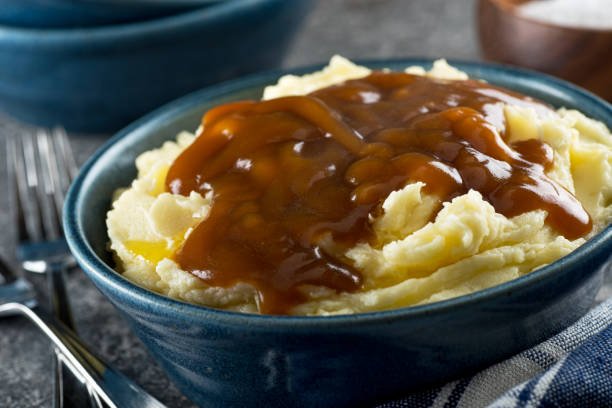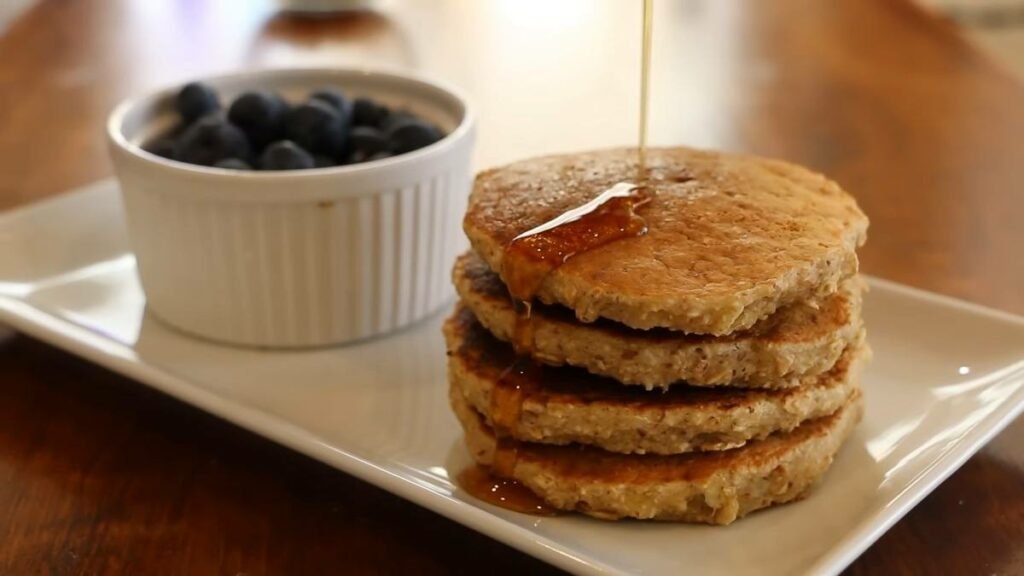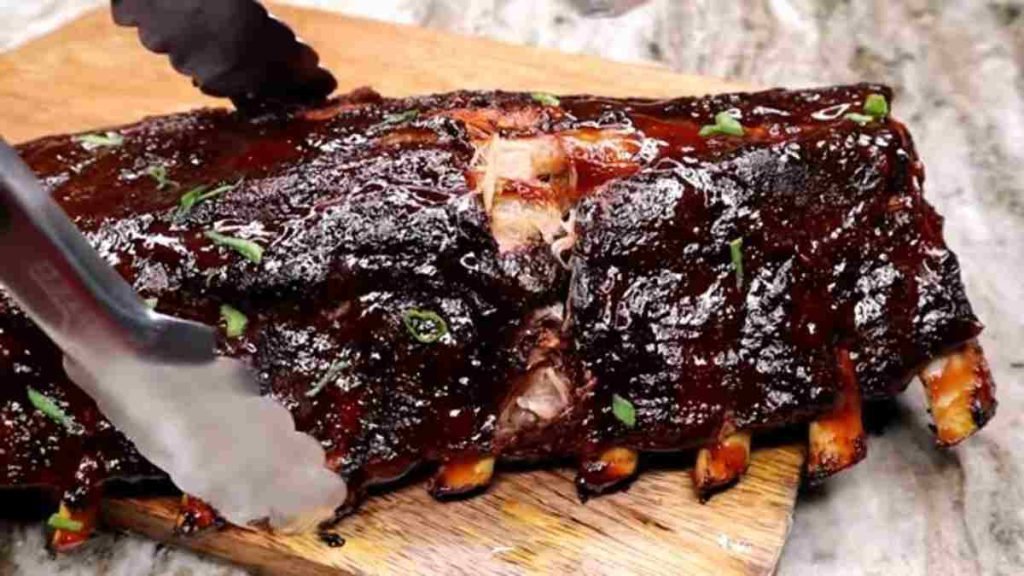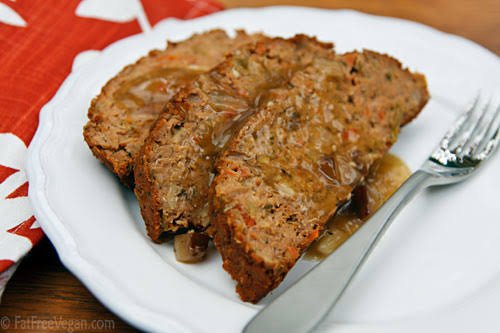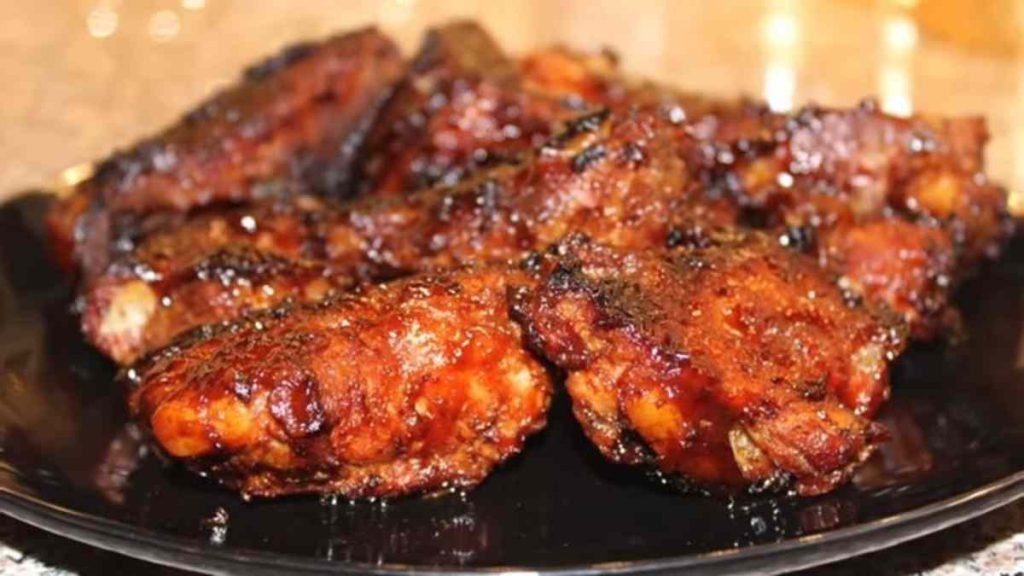Bread has been a staple in our diets for centuries, with countless variations and flavors across different cultures. Among the diverse array of bread, one that truly stands out is the irresistible and versatile pita bread. Originating from the Middle East, pita bread has gained popularity worldwide thanks to its unique pocket shape and its ability to transform an ordinary meal into a culinary adventure.
Imagine sinking your teeth into a warm, freshly baked pita bread, its aroma wafting through the air, and that satisfying feeling when you tear it open to reveal a soft, fluffy interior. In this post, we will guide you through a simple yet rewarding pita bread recipe that will have you craving homemade bread every time. We’ll explore the ingredients and the step-by-step process, and even share some tips and tricks to ensure your pita bread turns out perfectly every time.
What is Pita Bread Recipe
To truly appreciate the art of making pita bread, it is essential to delve into its fascinating history. Pita bread originates in the Middle East, dating back thousands of years. It was a staple in ancient cultures such as Mesopotamia, Egypt, and Greece, where it was considered a symbol of sustenance and an essential part of daily meals.
The earliest recorded evidence of pita bread dates back to ancient Mesopotamia, where it was baked on hot stones and enjoyed with various accompaniments. Over time, the technique of baking pita bread spread across different civilizations, evolving into the beloved flatbread we know today.
Pita bread offers a delightful combination of texture, flavor, and versatility. It has a crisp exterior when baked to perfection, while the interior remains soft and pillowy. The unique selling point of pita bread lies in its ability to form a pocket when baked, making it ideal for stuffing with an array of delicious fillings. From traditional Mediterranean dishes to global flavors, you can fill pita bread with endless ingredients, unleashing your creativity in the kitchen. It’s equally suitable for breakfast, lunch, dinner, or snacks.
Ingredients For Pita Bread Recipe
The list of ingredients you need to prepare the Pita Bread recipe includes:
- 4 cups all-purpose flour
- 2 teaspoons instant yeast
- 2 teaspoons sugar
- 2 teaspoons salt
- 2 tablespoons olive oil
- 1 ½ cups warm water
These quantities are based on a standard recipe, and they will yield approximately 8 pita bread rounds. Feel free to adjust the quantities based on the number of servings you desire or if you prefer smaller or larger-sized pitas.
Step-by-Step Guide Pita Bread Recipe Cooking Direction
Step-by-step cooking direction guide for the Pita Bread Recipe:
Step 1: Prepare the Dough
- In a large mixing bowl, combine 4 cups of all-purpose flour, 2 teaspoons of instant yeast, 2 teaspoons of sugar, and 2 teaspoons of salt.
- Mix the dry ingredients until they are well combined.
Step 2: Add the Wet Ingredients
- Create a well in the centre of the dry ingredients and pour in 2 tablespoons of olive oil.
- Gradually add 1 ½ cups of warm water to the bowl while continuously mixing the dough.
Step 3: Knead the Dough
- Transfer the dough to a clean, floured surface once the dough starts to come together.
- Knead the dough for about 8-10 minutes until it becomes smooth and elastic.
- You can use the heel of your hand to push the dough away from you, then fold it back and repeat the process.
Step 4: Let the Dough Rise
- Lightly grease a clean bowl with olive oil and place the dough inside.
- Cover the bowl with a damp cloth or plastic wrap to prevent the dough from drying.
- Allow the dough to rise in a warm, draft-free area for about 1-2 hours or until it has doubled.
Step 5: Preheat the Oven
- Once the dough has risen, preheat your oven to 475°F (245°C).
- Place a baking stone or baking sheet inside the oven to preheat.
Step 6: Shape the Pita Bread
- Punch down the dough gently to release any air bubbles that may have formed.
- Transfer the dough to the floured surface and divide it into eight portions.
- Shape each portion into a ball by folding the edges toward the center and pinching them together.
Step 7: Roll out the Dough
- Take one dough ball and flatten it with your hands.
- Roll the dough into an approximately 1/4-inch thick circle using a rolling pin.
- Aim for a 6-8 inches diameter for each pita bread round.
Step 8: Bake the Pita Bread
- Carefully transfer the rolled-out dough circle onto the preheated baking stone or sheet.
- Bake the pita bread for 3-4 minutes or until it puffs up and develops light brown spots.
- Keep a close eye on them to prevent over-baking.
Step 9: Repeat the Process
- Once the first pita bread is baked, remove it from the oven and transfer it to a clean kitchen towel.
- Wrap the bread in the towel to keep it soft and pliable while you bake the remaining dough portions.
- Repeat the rolling, baking, and wrapping process with the remaining dough balls.
Step 10: Serve
- Once all the pita bread is baked and wrapped, it’s time to enjoy your homemade creation.
- Serve the pita bread warm and fresh.
- You can use it as a pocket for fillings or tear it into pieces for dipping in hummus, tzatziki, or other delicious dips.
Equipment For Preparing Pita Bread Recipe
To make Pita Bread, you will need the following equipment:
- Mixing Bowl: A large mixing bowl is essential for combining the dry ingredients and kneading the dough. It should be big enough to accommodate the dough as it rises.
- Measuring Cups and Spoons: Accurately measuring ingredients is crucial for successful baking. Use measuring cups and spoons to measure the flour, water, yeast, sugar, salt, and olive oil.
- Mixing Spoon or Dough Scraper: A sturdy mixing spoon or a dough scraper can mix the ingredients in the bowl and bring the dough together. It helps in incorporating the wet and dry ingredients evenly.
- Rolling Pin: A rolling pin is necessary for flattening the dough balls into round pita bread. Choose a comfortable, smooth rolling pin to roll out the dough to the desired thickness.
- Baking Stone or Baking Sheet: A baking stone or a baking sheet is used for baking the pita bread in the oven. A baking stone provides even heat distribution and helps achieve a crispy texture, while a baking sheet can also be used if a stone is unavailable.
- Oven: You will need an oven to bake the pita bread. Preheat the oven to the recommended temperature, as mentioned in the recipe.
- Clean Kitchen Towel: A clean kitchen towel is useful for wrapping freshly baked pita bread. It helps to keep the bread soft and pliable by trapping the steam.
- Plastic Wrap or Damp Cloth: Covering the dough with plastic wrap or a damp cloth during the rising process helps create a warm and moist environment for the yeast to activate and the dough to double in size.
Tips & Tricks for the Perfect Pita Bread Recipe
Expert Tips and Tricks for Preparing the Perfect Pita Bread Recipe:
- Use High-Quality Flour: Opt for good quality all-purpose flour or bread flour to ensure sturdy and well-structured pita bread. Avoid using low-protein flours as they may result in a dense texture.
- Activate the Yeast: Dissolve the yeast and sugar in warm water before adding it to the dry ingredients. Let it sit for 5-10 minutes until the mixture becomes frothy and bubbly. This step ensures that the yeast is active and will help the dough rise properly.
- Knead the Dough Well: Proper kneading is essential for developing gluten, giving the pita bread structure and elasticity. Knead the dough for at least 8-10 minutes until it becomes smooth and elastic. If the dough feels too sticky, lightly dust the surface with flour as you knead.
- Allow Ample Rising Time: Give the dough enough time to rise until it has doubled. This usually takes about 1-2 hours depending on the ambient temperature. A longer rise allows the flavors to develop, resulting in a lighter, airy texture.
- Preheat the Oven and Baking Surface: Ensure your oven is preheated to the specified temperature before baking the pita bread. Additionally, preheat the baking stone or baking sheet inside the oven. This helps achieve a quick and even bake, resulting in well-puffed and lightly browned pitas.
- Roll the Dough Evenly: Roll out the dough balls into rounds of consistent thickness. Aim for approximately 1/4 inch thickness to balance a sturdy pocket and a soft, fluffy texture.
- Watch the Baking Time: Keep a close eye on the pita bread while it bakes to prevent overcooking. The pitas should puff up and develop light brown spots in about 3-4 minutes. Overbaking can result in dry and brittle pitas.
- Keep the Pita Bread Moist: Immediately wrap the pita bread in a clean kitchen towel once baked. This helps to trap the steam, keeping the pitas soft and pliable. Avoid leaving them uncovered for too long, as they may dry out.
Nutritional Profile of Pita Bread
Pita bread is a nutritious option that offers a range of essential nutrients. Here are some key components found in pita bread:
1. Carbohydrates
Pita bread primarily consists of carbohydrates, the body’s main energy source. Pita bread’s carbohydrates fuel daily activities and help replenish glycogen stores in the muscles.
2. Fiber
One of the notable benefits of pita bread is its fiber content. Fiber aids in digestion promotes a healthy gut, and can contribute to weight management by providing a feeling of fullness. Whole wheat pita bread, in particular, is a great source of dietary fiber.
3. Protein
Pita bread contains a moderate amount of protein, which is crucial for building and repairing tissues in the body. Protein also plays a role in producing enzymes, hormones, and antibodies.
4. Vitamins and Minerals
Pita bread is a decent source of vitamins and minerals, including thiamine, niacin, folate, magnesium, and selenium. These micronutrients are essential for maintaining overall health and supporting various bodily functions.
Health Benefits of Pita Bread
Now that we understand the nutritional composition of pita bread let’s delve into its health benefits:
- Weight Management: Due to its fiber content, pita bread can aid in weight management. The fiber helps regulate appetite and promotes satiety, reducing the likelihood of overeating. Opting for whole wheat pita bread further enhances its weight management benefits.
- Digestive Health: The fiber in pita bread contributes to a healthy digestive system. It promotes regular bowel movements, prevents constipation, and supports the growth of beneficial gut bacteria. Consuming adequate fiber through foods like pita bread can reduce the risk of gastrointestinal issues.
- Heart Health: Pita bread from whole wheat flour can benefit heart health. Whole grains have been associated with a lower risk of heart disease. The fiber, vitamins, and minerals in pita bread work together to support cardiovascular health.
- Blood Sugar Control: Choosing whole wheat pita bread over advanced options can help regulate blood sugar levels. The fiber and complex carbohydrates in whole grains slow digestion, preventing sudden spikes and drops in blood sugar. This makes pita bread suitable for individuals with diabetes or those looking to maintain stable blood sugar levels.
Pita Bread Is Best Served With?
Pita bread’s versatility makes it a fantastic choice for various culinary creations. Here are some popular ways to enjoy pita bread:
1. Hummus and Dips
Pita bread pairs exceptionally well with hummus, a creamy dip made from chickpeas, tahini, lemon juice, and garlic. The combination of soft pita bread and flavorful hummus creates a delightful and satisfying snack or appetizer.
2. Sandwiches and Wraps
Pita bread’s pocket-like structure makes it ideal for creating delicious sandwiches and wraps. Fill it with various ingredients such as grilled chicken, fresh vegetables, and sauces to create a portable and filling meal.
3. Mediterranean Delights
Pita bread is a staple in Mediterranean cuisine and complements dishes like falafel, shawarma, and gyros. Tender meat, vibrant vegetables, and tangy sauces wrapped in pita bread create a burst of flavors that will satisfy any palate.
4. Toasted and Topped
For a quick and easy snack, toast pita bread and top it with ingredients like avocado, tomato, cheese, and herbs. This provides a crunchy and flavorful alternative to traditional toast.
Can I Use Whole Wheat Flour Instead of All-Purpose Flour?
You can substitute part or all of the all-purpose flour with whole wheat flour for a healthier option.
Can I Make Mini-Sized Pitas?
Yes, simply divide the dough into smaller portions and roll them out into smaller rounds for mini pitas.
How Do I Store Leftover Pita Bread?
Store them in an airtight container or zip-top bag at room temperature for up to 2 days or freeze them for longer storage.
What if My Pitas Don’t Puff Up?
Ensure that your oven and baking surface are preheated properly. Also, make sure the dough isn’t rolled too thick.

Homemade Pita Bread
Equipment
- Mixing bowl
- Measuring cups and spoons
- Mixing Spoon or Dough Scraper
- Rolling Pin
- Baking Stone or Baking Sheet
- Oven
- Clean Kitchen Towel
- Plastic Wrap or Damp Cloth
Ingredients
- 4 cups all-purpose flour
- 2 teaspoons instant yeast
- 2 teaspoons sugar
- 2 teaspoons salt
- 2 tablespoons olive oil
- 1 ½ cups warm water
Instructions
- Combine the all-purpose flour, instant yeast, sugar, and salt in a large mixing bowl. Mix well.
- Create a well in the centre of the dry ingredients and pour in the olive oil. Gradually add the warm water while mixing the dough.
- Transfer the dough to a clean, floured surface and knead for 8-10 minutes until it becomes smooth and elastic.
- Place the dough in a greased bowl, cover it with a damp cloth or plastic wrap, and let it rise in a warm place for 1-2 hours, or until it has doubled in size.
- Preheat the oven to 475°F (245°C) and place a baking stone or baking sheet inside to preheat as well.
- Punch down the risen dough gently to release any air bubbles. Divide the dough into 8 equal-sized portions and shape each into a ball.
- Roll out each dough ball into a circle approximately 1/4 inch thick.
- Carefully transfer the rolled-out dough to the preheated baking stone or baking sheet and bake for 3-4 minutes, or until the pitas puff up and develop light brown spots.
- Remove the baked pitas from the oven and transfer them to a clean kitchen towel. Wrap them in the towel to keep them soft and pliable.
- Repeat the rolling, baking, and wrapping process with the remaining dough portions.
- Serve the pita bread warm and fresh. Fill them with your favorite sandwich ingredients or dip them in dips like hummus or tzatziki.
Video
Conclusion
Mastering the art of making homemade pita bread is a rewarding culinary adventure. The process of kneading the dough, watching it rise, and witnessing the pitas puff up in the oven is both satisfying and delicious.
With its versatility and ability to hold a variety of fillings, pita bread opens up a world of possibilities for sandwiches, wraps, and appetizers. So why try out pita bread today, using the tips and steps outlined in this post? Don’t miss the joy of savoring warm, freshly baked pita bread that elevates your meals and creates a delightful experience.




